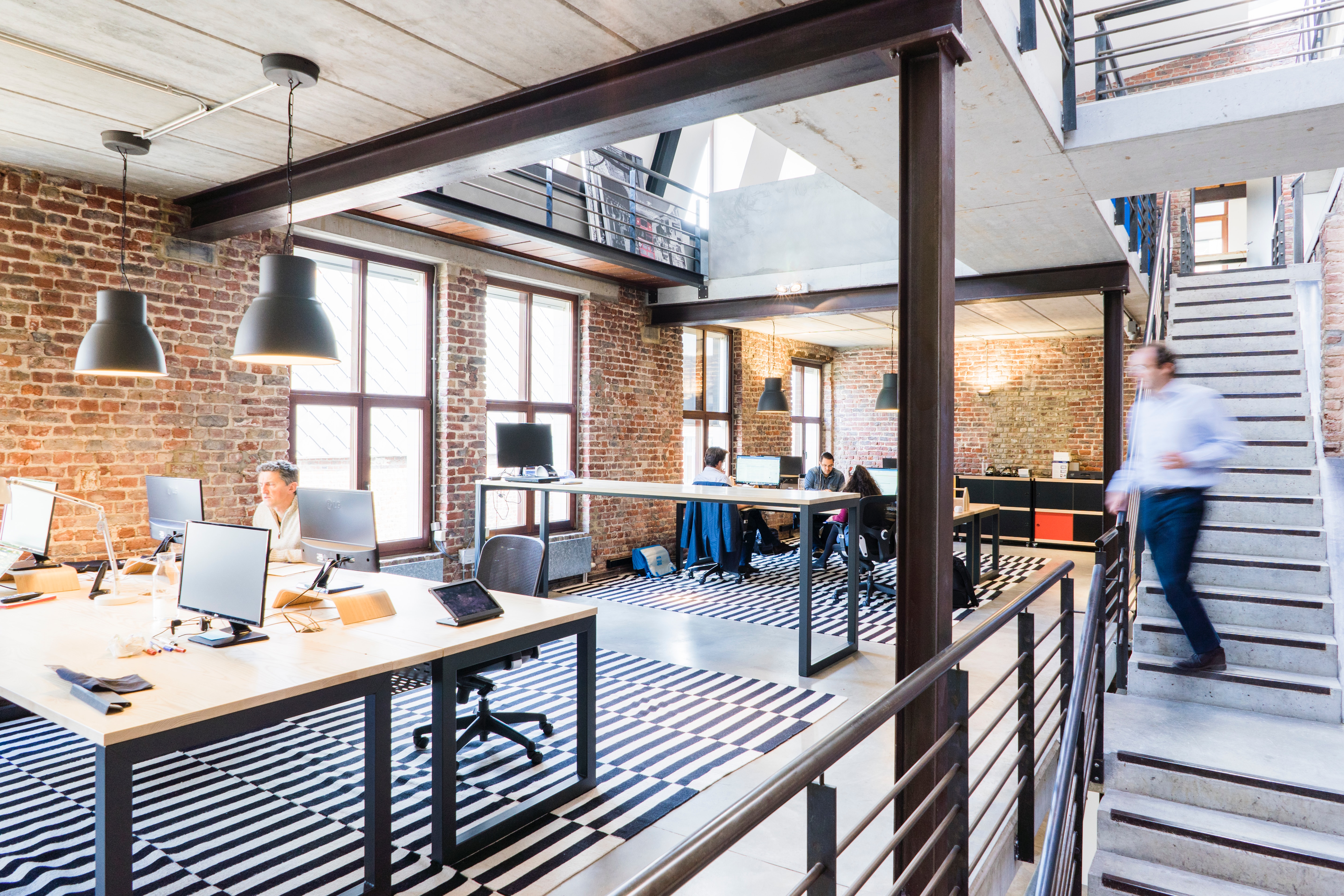We are living in an era of workplace transparency. Open offices and communal spaces have removed physical barriers, and technological advancements allow us to continuously track the ways in which employees work and interact.
There is no hiding. The open workplace was designed to foster collaboration and productivity, but Ethan Bernstein, an associate professor of Business Administration in the organizational behavior unit at Harvard Business School, argues it may be having the opposite effect.
In the third episode of ROOM’s “The Workplace of Tomorrow” podcast series, produced in partnership with The Slowdown, Bernstein reveals his findings on how employees are responding to the new normal, and offers solutions to constructing a more collaborative culture in the workplace’s wide open spaces.
Is the open office a flawed idea?
It’s never been easier to connect in the workplace. Aside from the removal of physical barriers, employees are also connected 24/7 through email, text, Slack, GoToMeeting, and more. So why is it that Bernstein’s study of two Fortune 500 companies found that their employees’ face-to-face interactions fell by 70 percent when they moved from cubicles to open offices?
One reason is that workers have adapted to the new open office culture and developed their own “hacks” to circumvent engagement. “Although knowledge workers are influenced by this [open office] architecture, they decide, individually and collectively, when to interact. Even in open spaces with colleagues in close proximity, people who want to eschew interactions have an amazing capacity to do so,” wrote Bernstein in his recent article The Truth About Open Offices in The Harvard Business Review. “Ironically, the proliferation of ways to interact makes it easier not to respond: For example, workers can simply ignore a digital message.”
These office hacks include headphones, curtains, and desk lights that shine red when employees are busy and green when they are available, and some employees have even strategically placed pictures on their desks in ways that allow them to hide. “I’ve seen all kinds of office hacks out there,” says Bernstein.
Unlocking collaboration through data
Companies not only changed how much people communicated, but also changed with whom they communicated when they moved their employees into open spaces. “We discovered that the network people were accessing electronically was different than the network they were accessing face-to-face,” Bernstein says.
What does all of this mean for the office of the future? Bernstein says that the biggest challenge companies face is creating a rhythm of collaboration that works for their corporate culture. That requires taking a deeper look into both individual and collective behaviors, and one of the most efficient tools for this is sensors. “We have countless ways to track employees’ behavior, from how long they sit in their chairs to how many messages they send via Slack. There are good and bad consequences here. Sensors that give us a higher level of awareness about what we’re doing and not doing will give us a chance to improve.”
Another way to track interactions is by collecting the digital “breadcrumbs” employees leave—when they book a meeting, send an email, open a browser window, post on Slack, and so on—as a result of systems that are designed to save communication metadata, as Bernstein has described in his article. “Increasingly, employers can use advanced analytics tools to study this data to understand employees’ collective behaviors. Algorithms that assess workers’ movements and interactions can learn to distinguish collaboration from mere copresence. Ones that analyze workers’ past behaviors can learn to predict their next moves, individually and collectively, and estimate the probability of a valuable collision between people.”
The objective is to use the data to bring people together in the office, and to make these interactions productive. There isn’t room for happenstance, according to Bernstein. The future is taking data to create individualized and adaptable workplaces. Still, he cautions, sensors can also prompt people who know they are being tracked to behave differently. “You could put thousands of sensors in the workplace, and human ingenuity is still going to win out.” Essentially, like office hacks, people will find ways to sidestep whatever is tracking their behavior. “Until we are comfortable being observed, the observation by tens, hundreds, or thousands of sensors isn’t going to make a difference.”
The biggest change: employee input
Bernstein believes that the ingenuity fostered by the heightened competition between workspace designers will create smarter spaces in the future. One solution is to bring together all vested parties, including the HR department, finance, management, and even real estate specialists to have a singular conversation about creating a portfolio of spaces that meets the collective needs of the company and is adaptable to the changing individual needs of each employee. “Because of both the different expectations of the millennial and Gen Z generations, and also due to improvements in technology, there’s going to be a lot more DIY,” Bernstein says, referring to the fact that workers will want more control over their workplace.
Now that workers have the technological capability and the permission to work from home, from Starbucks, from WeWork, or from a studio, Bernstein points out that we are faced with many different office formats. This will foster healthy competition in office design, that will create more options. “That’s good, in my view. But it is making real estate managers’ jobs a living hell.”
